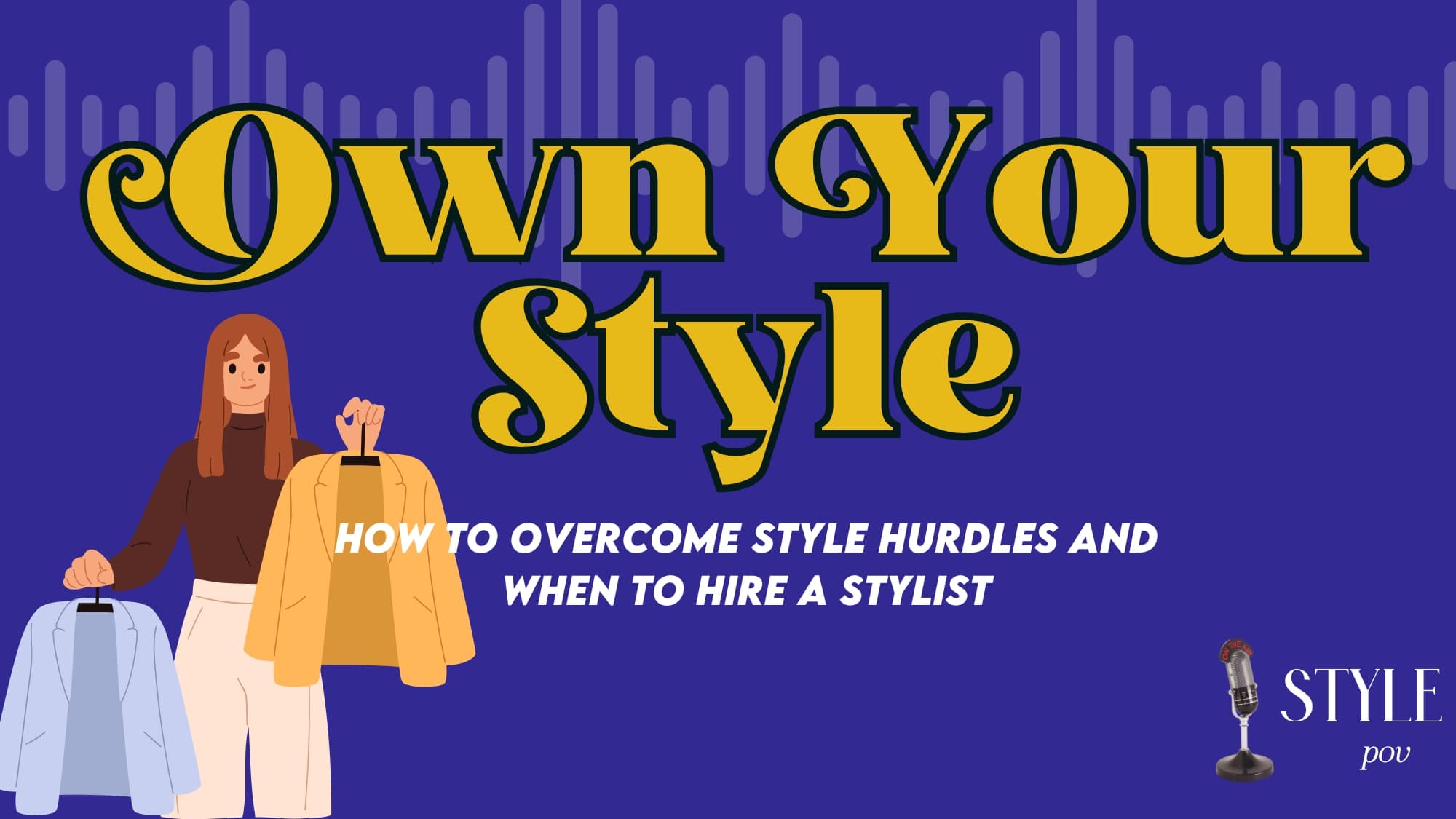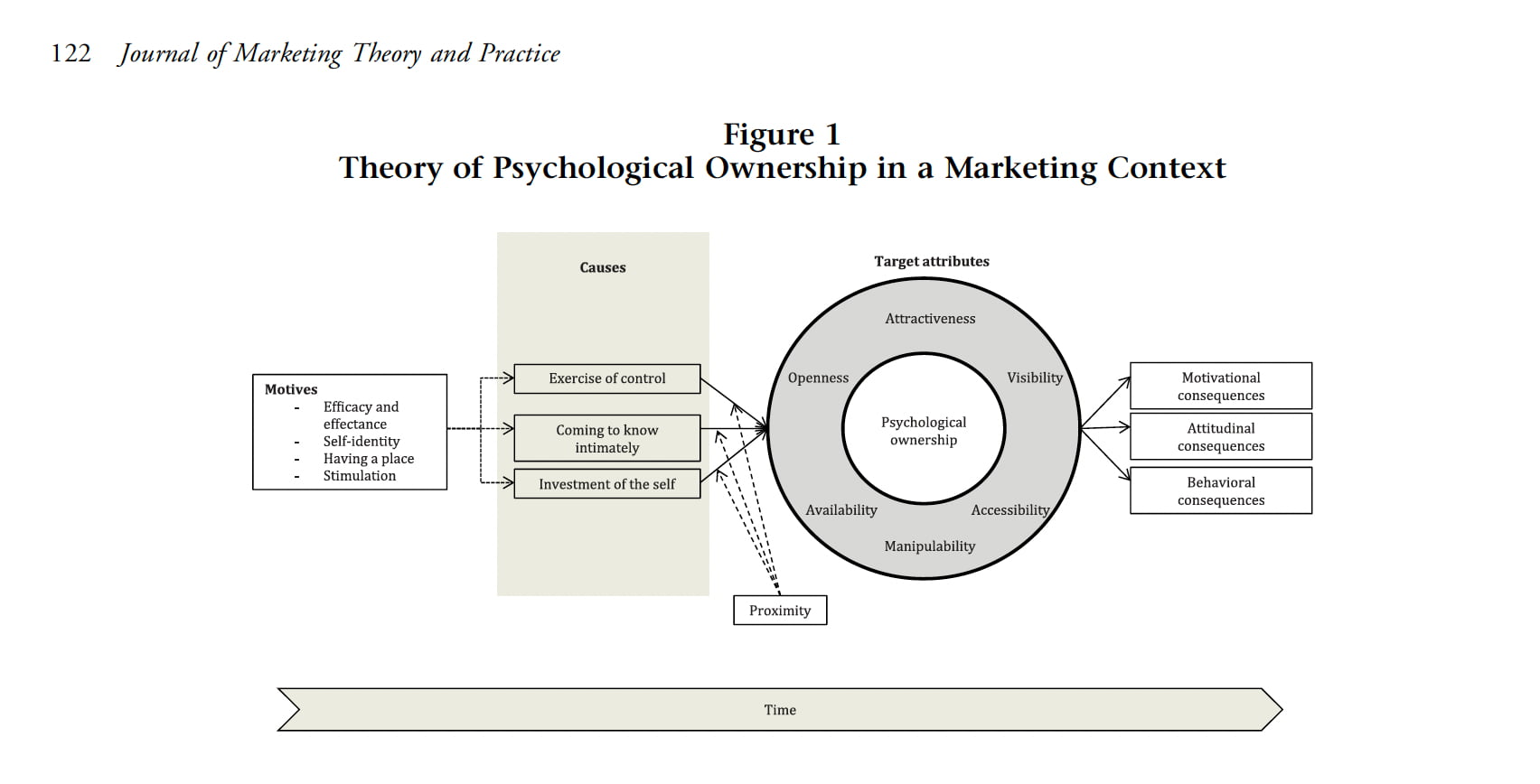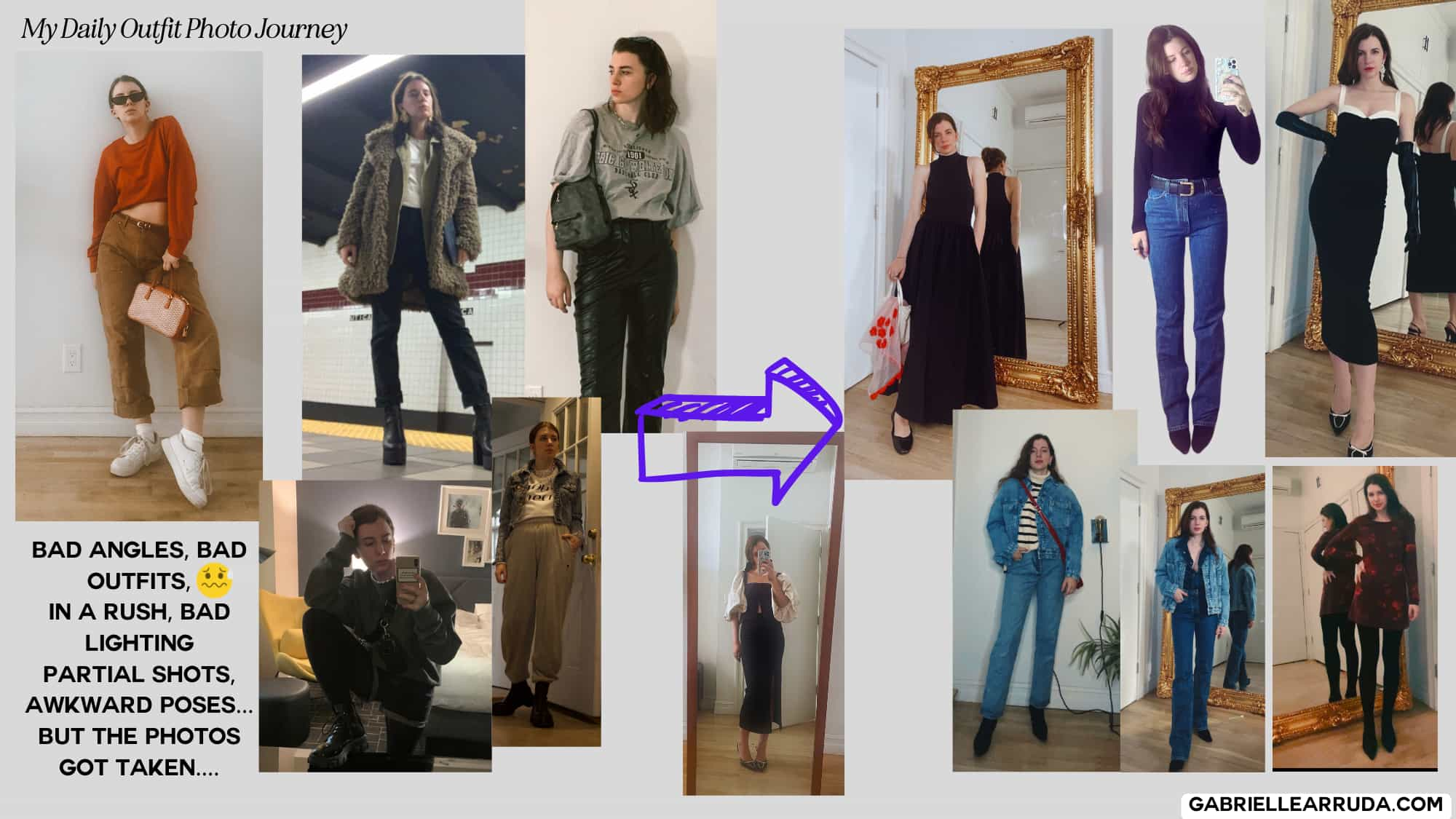The episode delves into the concept of psychological ownership in personal style, discussing the role of professional stylists and the importance of developing a personal style toolbox. It emphasizes trusting one’s fashion instincts, deriving inspiration from the problem-solving approach of MacGyver, and finding strength through owning one’s style POV.
Listen to it:
Transcript:
Personal style is by default meant to be personal I mean, it’s not like if you pay enough money, someone will hand you a title to your personal style. A more apt way of looking at this and exploring ownership of your style would be psychological ownership.
Hi, I’m Gabrielle Arruda your host for the Style POV podcast and I’m here to help you learn to trust your fashion instincts, hone your authentic style POV, and find strength through style.
Ownership is an interesting concept when we think about it in the domain of personal style.
Personal style, is by default, meant to be “personal”. It’s not called “let everyone else dictate who you are” style.
Or “appease your judgmental mother-in-law” style.
It’s personal.
But, I think taking ownership of one’s style is an even more challenging concept. And in this episode we are going to talk about owning your style and what that actually means, the role of professional stylists and when they can hurt or help your style journey, and the impact of MacGyvering your own unique style POV.
Exploring Ownership in Style
Now, not to bore the pants off of you, but Webster’s dictionary defines “ownership” as the state, relation, or fact of being an owner.
Which I find to be overly generalized and not completely relevant when forming thought processes around your personal style.
I mean, it’s not like if you pay enough money someone will hand you a title to your personal style.
A more apt way of looking at this and exploring ownership of your style would be psychological ownership.
This can be defined as “ the state in which individuals feel as though the target of ownership (whether material or nonmaterial) or a piece of it, is “theirs”.
It’s a sense of control, of possession, a very high degree of personal connection. It starts with claiming “It’s mine” and translates into a commitment and sense of true identification.
And as always, find these concepts and studies linked in the show notes.
Now this type of psychological ownership becomes both cognitive and affective. So not only does it begin to reflect the individual in their thoughts, beliefs, and appearance it also taps into their emotions and they develop personal meaning behind this ownership.
So someone who takes psychological ownership of let’s say their Kibbe Image Identity Type, may begin to change how they dress and what they buy, but they may also more deeply connect to the essence of the ID that begins to change how they feel about themselves and what they believe to be true about themself.
Powerful, right?
We begin to see ourselves in the thing that we are “owning”.
You only need to spend a few moments on the various fashion communities to see how we can revert to our toddler self announcing this ID is MINE. And how dare that stranger on the internet tell me it’s not, as if they were a parent removing a ball from a toddler’s hand.
Which is obviously different than the type of ownership you feel when you buy a can of soda or a cheese grater. Yes, they are your possessions, but for most people, they aren’t going to feel defined by their cheese grater.
And we often develop this sense of ownership if we are early to know about it, or one of the first. Ever read a comment of someone saying “Well I’ve been studying Kibbe for 15 years”, as if that makes them more qualified to own their ID than the person just discovering it. Nuanced misinformation aside.
The Four Pillars of Psychological Ownership
Now the original creators of this concept identified 4 main components of psychological ownership, and don’t worry we will tie this into personal style very soon. They are Efficacy and effectance which would translate to efficacy being a person’s ability to dress themselves in a way that they intend and love. And effectance, shopping at a certain store or styling yourself in a certain way to get this desired outfit outcome.
Next, we have self-identity. We see ourselves as “free spirit chic” so we establish that as part of our self-understanding. Our goal is to ask who we are today, but also who will I become and when we take ownership of something like our Kibbe Image Identity, that may help us cement our perceptions of self.
The next is “having a place”. We like to find our place among the chaos, to have a home territory that we feel safe in. Now this can be more literal like an actual location, my style has a place in New York because everyone is non-judgmental and free to express their style selves. Or it could be a community or identifier, I joined a Flamboyant Natural online community because I wanted to find like-minded people who understand my personal style journey and can relate to my wins and struggles.
{join my free Facebook group, if you’re looking for like-minded fashion lovers!}
And the fourth is Stimulation. We as human beings have certain need stimulations, and this is why we can sometimes move too fast in our style journey and forget to actually apply the information we gather. We don’t actually want to live in the comfort zones of our styles, so we seek out the next challenge whether that be through a new trend, self-experimentation, or a new curation of inspiration.
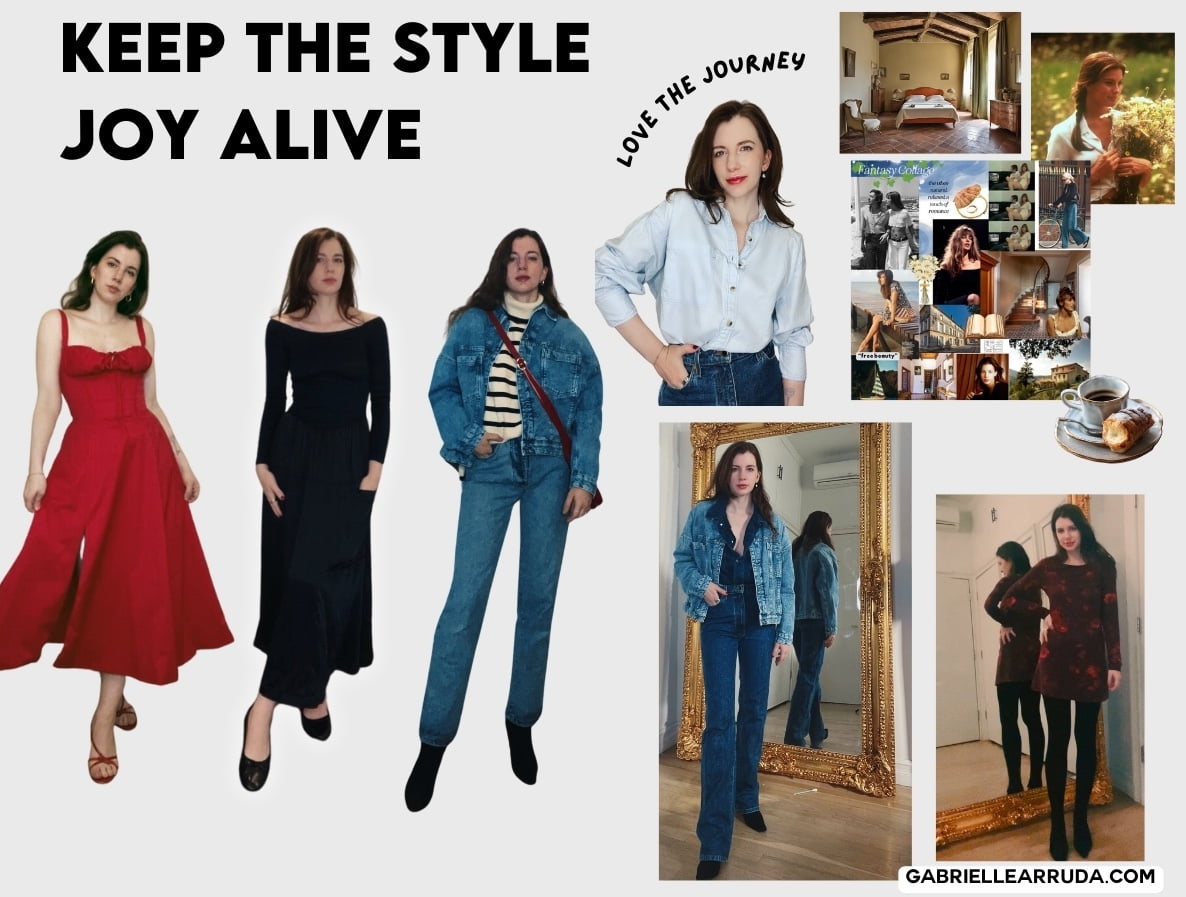
You learn about a new style system; it stimulates your interest and inspires you to think about how you could grow and change, ideally getting closer to that “who will i become” ideal.
Fantastic. But pause and test it there. Because accumulating hundreds of hours of information with no execution will not fill this stimulation need. Because the stimulation is a path toward a desired new outcome.
These 4 elements converge after we have come to know the topic intimately and formed a personal connection or investment of self within the idea. Then psychological ownership.
Now that’s all well and good. I get it, I can mentally think about owning my style. But, how and when do professional stylists come in? And agree they hurting or helping your style journey?
The Role of Professional Stylists in Your Style Journey
Part of developing psychological ownership is rooted in a sense of control over the topic. And we want to feel like our style is our own, not something anyone else is telling use we have to use or become.
A stranger online tells you that you have gamine essence, or many many strangers online tell you this, but as hard as you’ve tried (and hoped) you can’t seem to see yourself that way.
Tell me how I picked that example. Ha!
But, it’s important to remember that you know yourself best. And choosing the correct time and the correct venue to gain more mastery or knowledge or opinion on a topic is critical.
This may be slightly controversial, but professional stylists can only help so much in the typical 1-on-1 format.
While they may have more knowledge than you on a particular topic or are even the foremost experts in the topic, they don’t know you as well as you know yourself.
So you don’t want to hire a stylist too early in your journey because you won’t be able to accurately express your style concerns or direction. You need to have experimented, collect some style data, and have a precise style goal that you can clearly explain. And have found a stylist whose advice and results FIT that goal.
Similarly, you don’t want to hire a stylist to confirm what you already know. I know it’s so tempting to get a formal name for your body type, but if you like where your style is going and how you are building outfits, that nomenclature shouldn’t really move your style needle.
And, instead of one one-on-one sessions, I wish more stylists would do workshops. Where they style many people and we can see different evolutions and different ownerships of style being logically presented and thought out.
This allows you to see what is possible, and create an expansive mindset around outfit building. Because that advice that was given to person A might help person C just as much.
Which is why I do those “build outfits from your style parameters” youtube videos, because they show you my process and you may uncover a new process for yourself.
So personal stylists can be incredibly helpful along your style journey but we want to involve them at the right time.
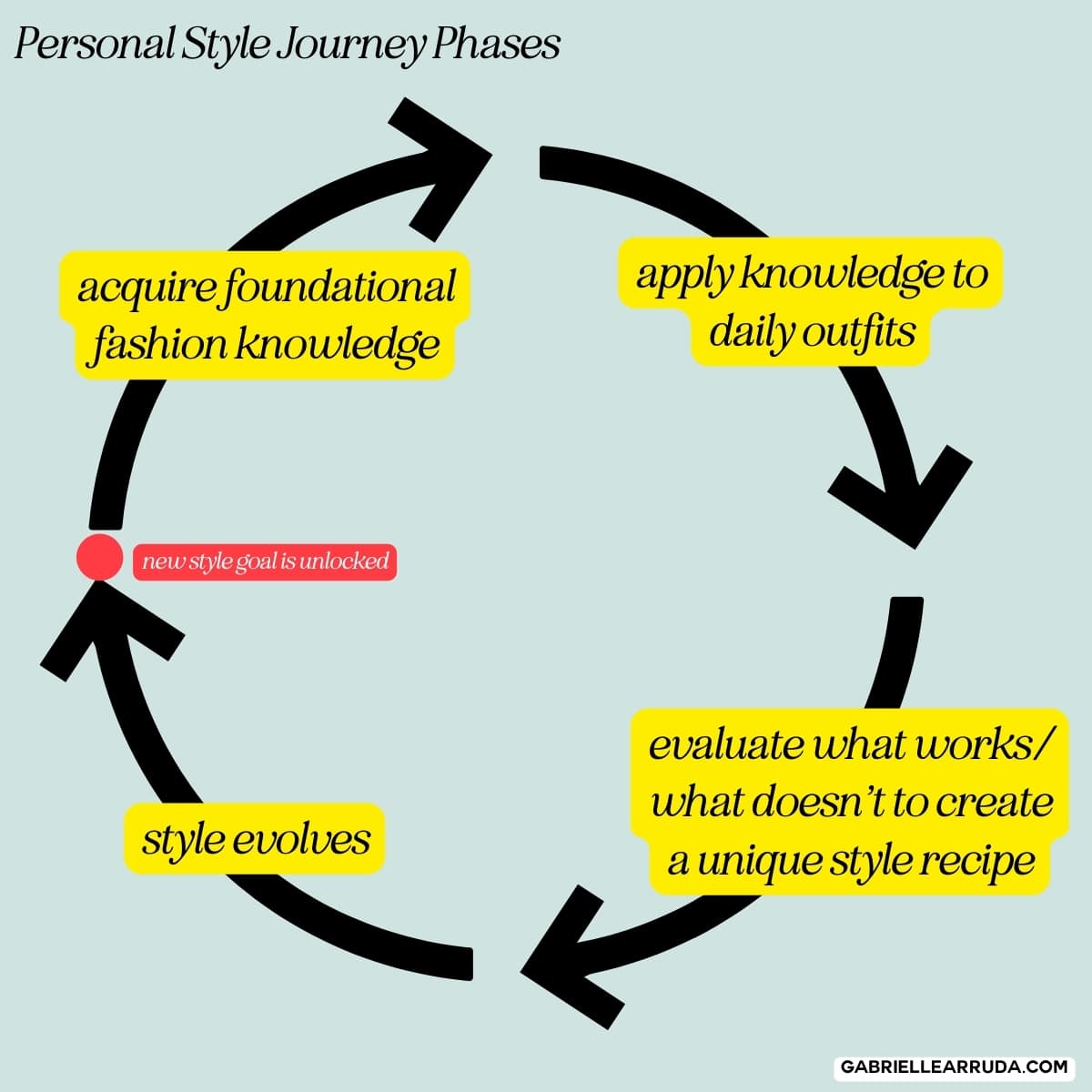
If you think about your style journey as a circular chart starting with “acquiring foundational fashion knowledge” moving on to applying that knowledge in your daily outfits to evaluating that data, and then finally your style evolving. We want to hire a stylist potentially between the evaluation phase (3rd) and right before our style evolves.
This allows us a very firm understanding and goal, but maybe requires a professional to fill in our education gaps and help get us to that “style evolves” 4th phase.
Then spoiler alert, a new style goal is eventually unlocked and the cycle starts all over again. Check the show notes if you need a visual of this.
So, owning your style or elements of your style toolbox, important.
Hiring a stylist you respect, enjoy their results and explanations, AND at the right time in your style journey, great.
But what about all the other moments of your style. How do we train ourselves to trust our own fashion instincts, and believe we can achieve our dream styles?
MacGyvering Your Style Solutions: Creative Problem Solving
Well, we are going to learn to MacGyver it.
Now, for those not aware of who or what MacGyver is. It was a TV show that was based around a character named MacGyver who was a secret agent and refused to use any violent means to solve a crime or get out of a jam. Instead, he had this immensely creative and scientifically explorative methods to solve his problem.
Like creating a makeshift laser to get out of a locked room.
It was creative, engaging, and thought-provoking. There was a value pillar he lived by; to not use violence under any conditions.
There was creative problem-solving- how can I use a lamp, a mirror, and a glass cup to get out of this room?
He made what he had work for him.
So, why am I rambling about an old TV show and how does that relate to your style journey and ownership?
This is why I harp on you to create your style toolbox. Episode 1 if you need a refresher.
Your style toolbox is all the information you find VALUE in, and is customized for your needs, and they should help you find the creative solution to “get out of the locked room”.
The more you explore your style on a daily basis by reflecting on your outfits and taking daily outfit photos, the better you will be in using your style toolbox.
But the tools you deem worthy of your style toolbox can help you get out of your style jam.
Your style toolbox can’t be every style system you’ve ever read about and every tidbit of advice for each of those systems stuffed into a metaphorical box.
It needs to be a selected and refined version that you have personally tested and defined. And they should also consider your bigger values and bigger style dreams.
MacGyver’s problem-solving was directed by a moral pillar of “no violence”. Your unique style POV which includes your thoughts and beliefs, can help direct what goes into your style toolbox and how you build your outfits.
And the more in tune with your unique style POV, the more value and OWNERSHIP you will feel around it.
You’re not choosing that shirt because it fits your Kitchener Essence or works for your seasonal color palette. You’re choosing that shirt because of what it communicates, how you feel when wearing it, and what it represents to you.
The more value and direction you can find in your style, the less easily influenced you will be to change it. And the more clarity you will find along the way, and style problem solving will become second-nature. Your pattern recognition and application will be oh-so-refined.
And your confidence in your ability will also grow. New style hurdles, no problem. I can do this.
Now, MacGyver has inspired a lot of people to think about problem-solving differently. In fact there is a whole MacGyver method.
Applying the MacGyver Method to Style Challenges
This involves, writing out, by hand, your problem. But, the quicker we want an answer, the more specific the question should be.
You could write down “ What types of shirts do I like?”
or “Why does this dress look weird on me?”
Then you’re going to go do something for 20 minutes completely unrelated, something with your hands, go for a walk, take a shower, make lunch. This is the release, you put the problem into your mind, and now you’re just letting it go.
You’re going to go to bed, and the next day you’re going to spend 3-5 minutes writing out the answer to your problem.
it’s totally ok to start out by saying “This is the stupidest thing I’ve ever heard, and Gaby is annoying me by asking me to do this”
But just keep writing for those 5 minutes. An unprecedented amount of times, you can write out the answer.
You end up saying “ I hate you Gaby but I do want to know why that dress looks weird and now I realize it just doesn’t vibe with who I am, I’m not sure why I even bought it in the first place, and I don’t like how it feels on me, it feels tight through the shoulders, so I’m going to start paying attention to the garments that I do enjoy and how they are constructed in the upper body”.
Embracing Your Unique Style POV
Which is why I created this podcast. I want us to be more aware of own style instincts. That professionals or crowd-sourcing can be great supplements, but they shouldn’t ever replace your style ownership.
I want you to think about it:
what do you own about your style? What system feels deeply connected to part of your identity? What elements don’t feel connected and are you’re trying to force them anyway?
Just because Sally had her style changed because of this style system, doesn’t mean that it’s right for you.
I’m not saying each phase of your style journey will be struggle-free, but once you embrace your own fashion instincts, you’ll feel confident to MacGyver your way through any style hurdle.
To finding strength through style, and owning our own Style POVs.
Until next time.
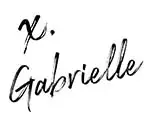
References
Individual Psychological Ownership: Concepts, Evidence, and Implications for Research in Marketing
The State of Psychological Ownership: Integrating and Extending a Century of Research


